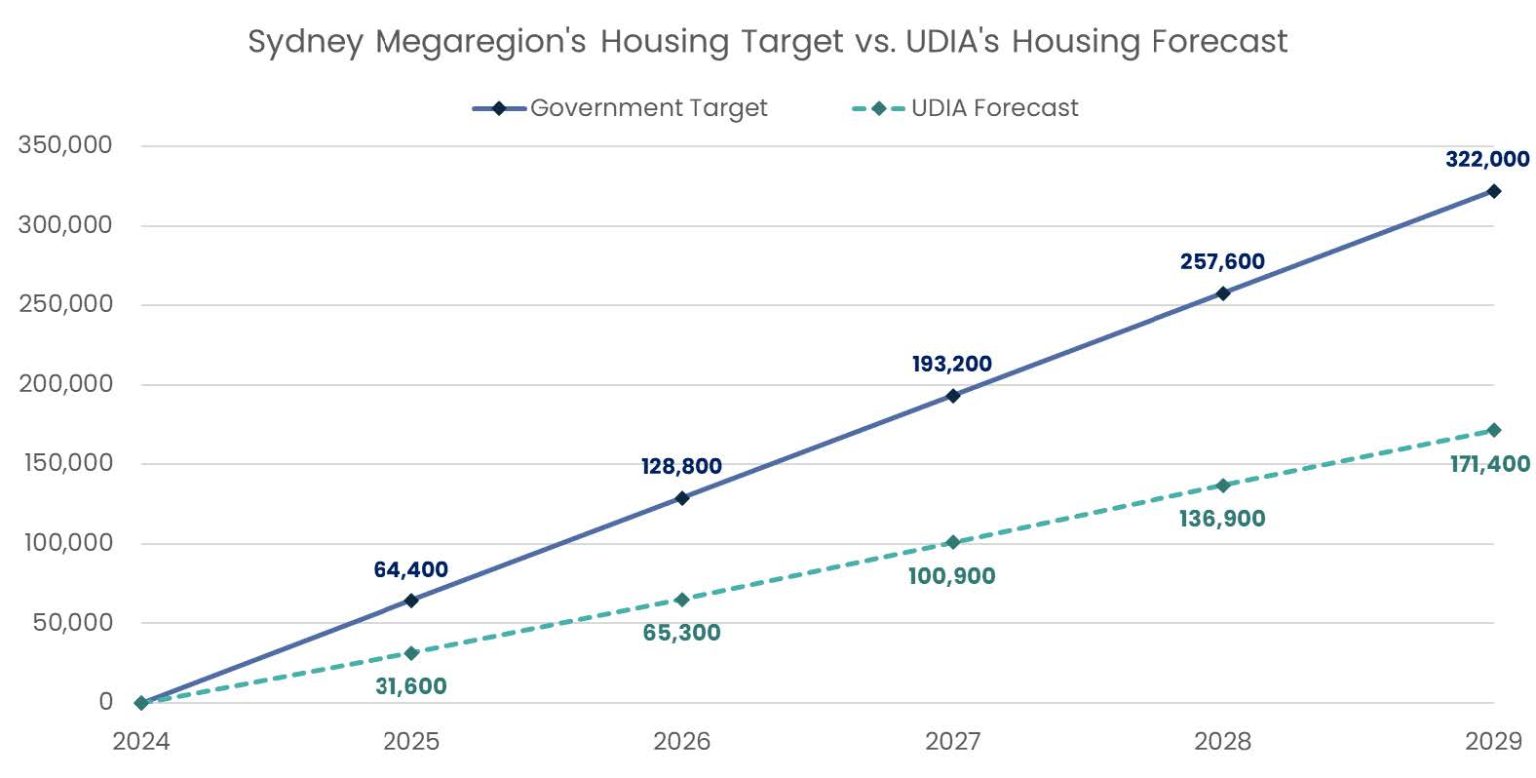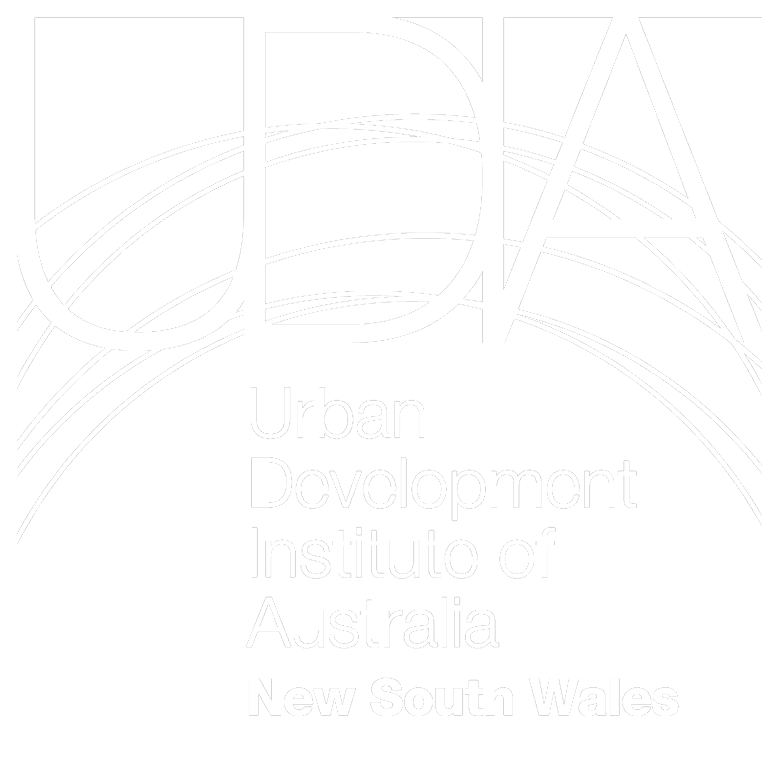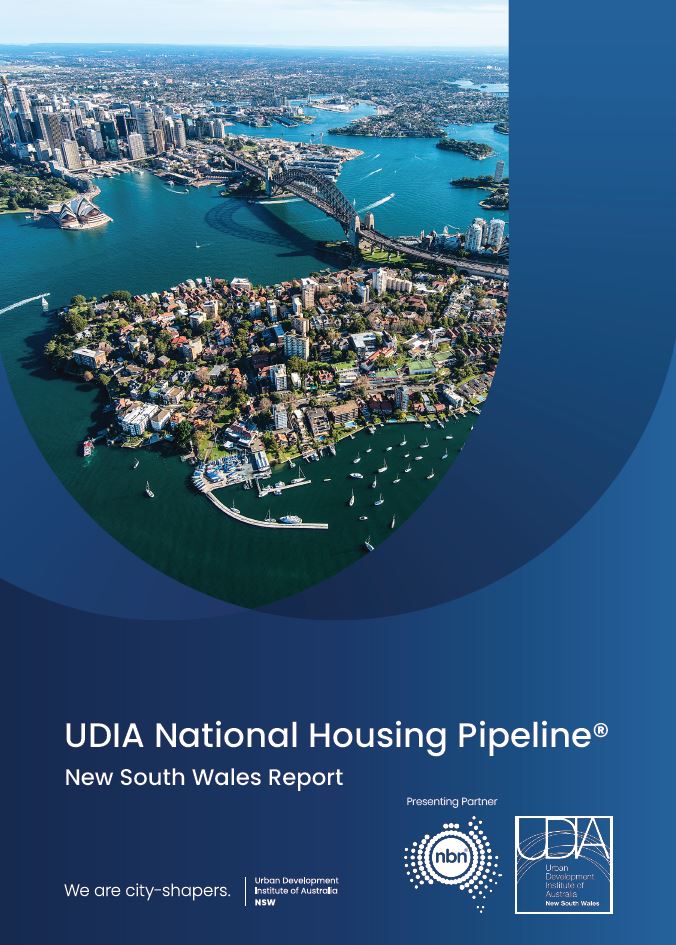The findings of the UDIA National Housing Pipeline ® (NHP) – NSW Report show that only 171,400 homes are forecast to be completed during the five-year Housing Accord period. This represents a shortfall of 150,600 homes across the Sydney Megaregion.
“A shortfall of 150,600 homes should not be accepted and requires immediate interventions from the NSW Government to enhance housing supply,” said Stuart Ayres, UDIA NSW Chief Executive Officer.
The NHP forecast is a combination of UDIA’s developer intentions survey, CoreLogic’s Cordell database, and the Department of Planning, Housing and Infrastructure’s Sydney Housing Supply Forecast.
The timing of this report being released early in the Housing Accord period, provides Government time to implement additional interventions to remove constraints and increase the amount of homes industry can deliver across the Accord period.
“Waiting any longer before taking corrective action on housing supply, will only ensure more people are denied an opportunity for a place to call home” said Stuart Ayres.
Findings show that 97% of potential homes are currently not development ready. The NHP reveals the reasons why we are expected to fall short, and where opportunities exist to unlock housing. The three main factors impacting housing supply over the next 5 years are:
- A slow Planning System –42% of potential homes are awaiting at least one approval determination before development can commence.
- A lack of Enabling Infrastructure – 30% of potential homes are held up by a lack of committed, funded, or completed enabling infrastructure (water, power, sewer, and roads).
- Environmental Constraints – only 10% of the Sydney Megaregion’s residentially zoned land is vacant and environmentally unconstrained (e.g., not flood impacted, bush fire prone etc.).
Previous UDIA research has highlighted feasibility challenges, which means that the Low and Mid Rise Reforms and TODs are unlikely to fill the shortfall. This demonstrates that further Government interventions will be required to increase housing supply.
UDIA acknowledges the housing supply programs underway by the NSW Government and intends for this report and its recommendations, to be a ready-made action plan for Government to collaborate with industry to improve housing delivery.
“Meeting our housing objectives will not be resolved by one lever alone. We need to see a diversity of typologies, increased investment in enabling infrastructure, and the Government genuinely prioritising housing supply,” said Stuart Ayres.
The UDIA National Housing Pipeline® NSW Report, presented in partnership with NBN Co. can be found at these links – Low Res Link and High Res Link.

-ENDS-
Sydney Megaregion: Metropolitan Sydney, Central Coast, Lower Hunter, Illawarra-Shoalhaven
Key Recommendations from the UDIA National Housing Pipeline ®, presented by NBN Co. – NSW Report
1. Increase investment and improve coordination of enabling infrastructure.
That the NSW Government’s Infrastructure Opportunity Plans prioritise enabling infrastructure necessary to unlock housing identified through the Urban Development program which can be delivered over a rolling five-year period.
2. increase infrastructure delivered by industry through Works in Kind.
That the State Government urgently finalises a Works in Kind policy to bring forward the future housing development pipeline, which is uncapped and allows any item listed on DPHI’s Infrastructure Opportunity Plans to be delivered under an in-kind arrangement.
3. Stronger collaboration between industry and Government.
That the NSW Government better aligns its understanding of the pipeline with developer intentions, looking to incorporate the data and methodology used in the UDIA NHP, and prioritising the use of industry intentions to support infrastructure investment decisions.
4. Improve development feasibility.
That the NSW State Government considers the recommendations from the UDIA NSW Making TODs Work – June 2024 report to support infill feasibilities, given apartment sites identified in the NHP survey also revealed feasibility constraints and a need for more flexible zonings (see Appendix 2).
5. Enhanced decision-making through transparent use of data.
That the State Government adopts an open data sharing policy and continues to partner with industry bodies in the presentation and uncovering of that data to help continuously inform evidence-based policy reform.
6. Improve opportunities for collective sales.
That the State Government reviews the current collective sale provisions of the Strata Schemes Development Act to streamline the current process and provide certainty to developers where a majority of owners want to sell, and developers are willing to invest in unlocking new housing.
7. Create greater certainty for conservation requirements.
That the NSW Government increases investment into the delivery of strategic conservation plans in high growth regional precincts, and improvements to the bio-certification process for individual sites to bring more certainty of good outcomes for both biodiversity and development.
The full UDIA National Housing Pipeline Report, presented in partnership with NBN Co can be found at this low res link and at this High Res Link

